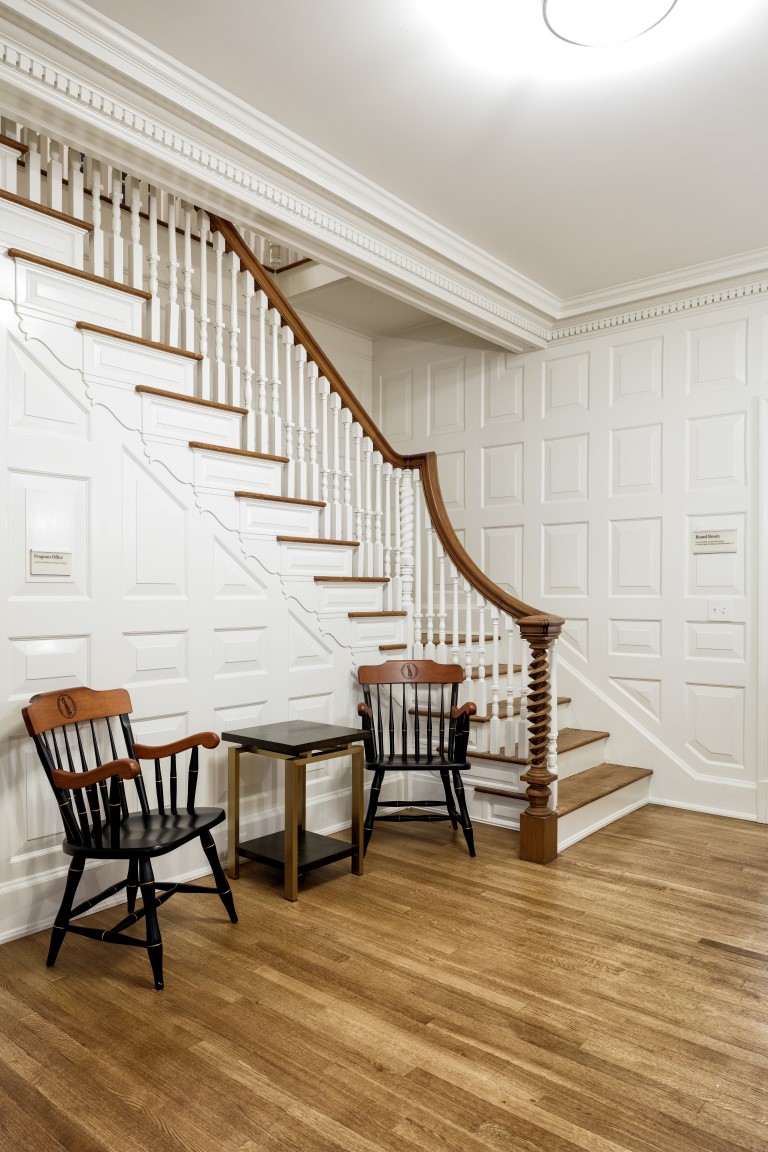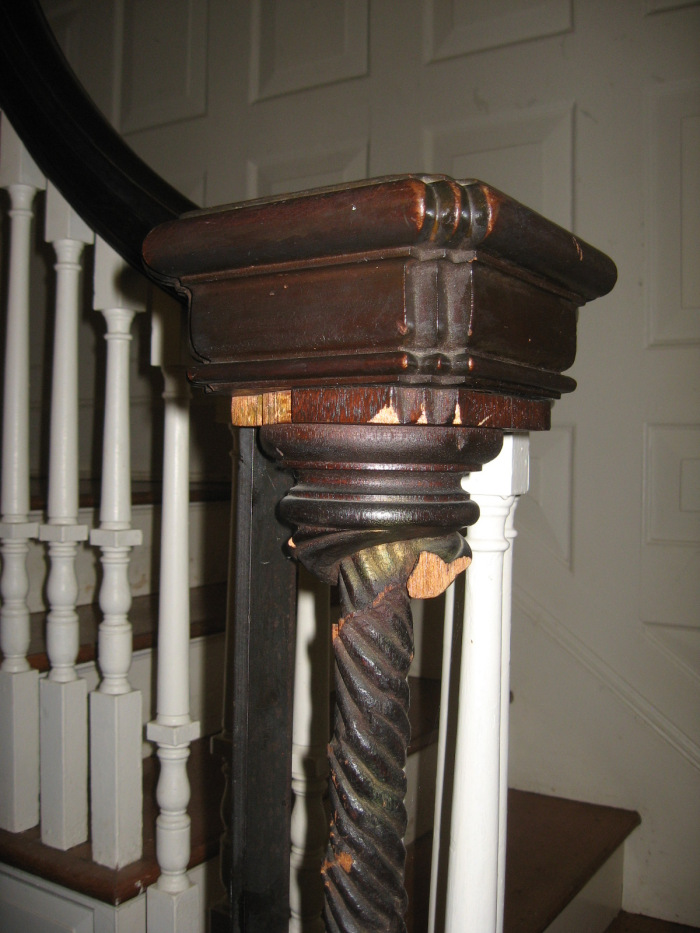
“One recent project found us briefly stumped over a battered ornamental newel post. We did some research and found out a lot more than the building owner expected. Glavé & Holmes Architects’ Project Manager Linda Coile, working with our in-house preservation specialists, was able to turn it into a miniature triumph of sorts.“
One of Glavé & Holmes Architecture’s (GH&A) recent projects illuminates the interesting quirks found in significant historic properties and the technical innovation and historic expertise needed to make them whole when they have been damaged through hard usage over time. The Brody Jewish Center, located in the University Corner neighborhood in Charlottesville, has served as a student center for Jewish students at the University of Virginia since 1949.
The compact, two-story, stuccoed brick house incorporates details derived from English Arts and Crafts country houses of the late nineteenth and early twentieth centuries. The architect included some details that are associated with American Colonial Revival designs.
The historic building was originally a residence completed in 1914 for Professor Stephen H. Watts and his family. It represents architect Eugene Bradbury’s work, one of the most innovative and accomplished designers working in Charlottesville in the early twentieth century. The Brody Jewish Center engaged the team of Martin Horn and Glavé & Holmes Architecture to evaluate and rehabilitate the historic portion of the existing facility.
As might be expected from the exterior, the interior of the Watts-Hillel House is provided with a high degree of finish and detail. The most significant interior is the entry passage. This is treated as a fully paneled 18th-century hall with an elegantly detailed staircase. The stair features wide paneled tread ends supported by applied scrolled brackets, three turned balusters per tread, ramped and eased molded rail with helical turned “barley sugar” secondary newels, and a substantial turned bottom newel with an undercut double helix surround. This masterful example of craftsmanship had been treated roughly by generations of students and was hardly recognizable. The helical portion had broken mostly off.

GH&A architectural historian Gibson Worsham, AIA, recognized the detail from past reading. With a little focused research on the kinds of books available to the architect in 1914, he identified it as being derived from an important New England house dating from 1755. The carved newel in the Mary Lindall House in Salem, Massachusetts, has the same form, but the Charlottesville example, while incorporating the helical surround, had been much simplified.
The newel was judged to be too damaged to restore and instead a copy was made by the millwork shop at Gaston and Wyatt in Charlottesville, produced on a CNC Router. Here is the final result!

Reprinted with permission from GH&A and author Gibson Worsham, AIA. This post originally appeared in Preservation Spotlight: Restoring a Helical Newel Post.
